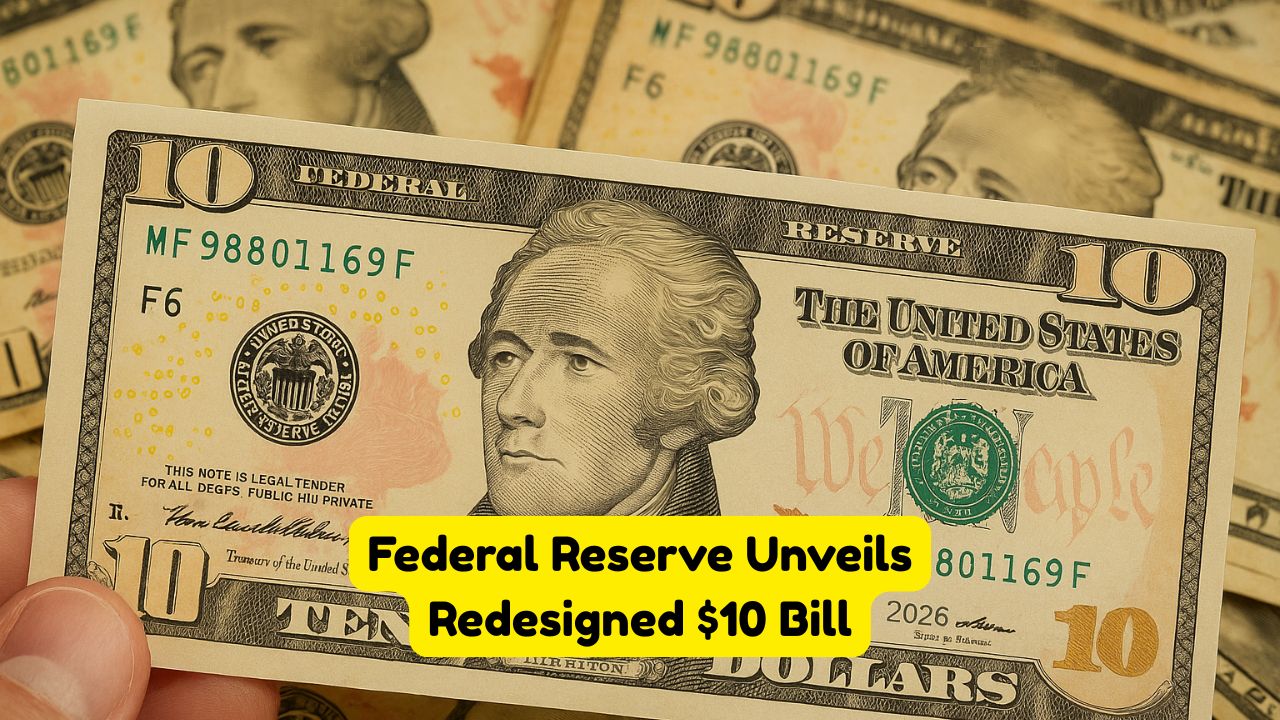$10 Bill – The Federal Reserve has announced that a redesigned $10 bill will officially be introduced in 2026, marking a significant change in American currency. This updated version is not just about aesthetics but also about advanced security features aimed at combating counterfeiting. With innovations such as improved holographic strips, color-shifting ink, and enhanced tactile marks for visually impaired citizens, the bill promises to set a new standard in the world of currency. The redesign reflects both modern technological progress and a deeper commitment to accessibility and security. Many consumers are already wondering how this change will impact their daily transactions, while businesses are preparing to update cash-handling machines and ATMs. For the public, the redesigned bill symbolizes not only a piece of money but also a reflection of evolving financial security measures in the U.S. As history shows, every redesign sparks both excitement and adjustment, and the 2026 rollout of the new $10 note will be no exception.
Why the Redesign Matters
The decision to redesign the $10 bill comes after years of research and planning, with the goal of staying ahead of counterfeiters. Criminals have grown more sophisticated in producing fake currency, and updating banknotes with cutting-edge technology ensures greater protection. The redesign also plays an educational role, reminding the public of the constant vigilance needed in financial security. Beyond counterfeit prevention, the note will integrate tactile features to make it easier for visually impaired Americans to identify denominations—something advocates have demanded for decades. The redesign of this widely used denomination is a reminder that the Federal Reserve must balance tradition with innovation. Ultimately, the redesign matters not just because it protects the economy but also because it reflects inclusivity and progress in a tangible way.
Security Features You Can Expect
The new $10 bill will come equipped with some of the most advanced security features ever seen in U.S. currency. Among them are 3D security ribbons, holograms that shift colors under light, micro-printed texts, and raised tactile markings. These changes will not only make it harder for counterfeiters to replicate the bill but also help consumers quickly identify authentic money. Advanced printing technologies, including high-definition background colors, will give the bill a distinctive new look while making fake reproductions far more difficult. The inclusion of features for the visually impaired also ensures that the bill is more accessible than ever before. With these updates, the $10 bill is expected to serve as a global example of how technology can safeguard financial systems while enhancing usability for all.
Impact on Businesses and Consumers
For businesses, the redesigned bill means updating ATMs, vending machines, and other cash-handling equipment to recognize and validate the new currency. This may come with initial costs, but in the long run, it increases security and trust in cash transactions. Consumers, on the other hand, will need to familiarize themselves with the new look and feel of the bill. While there may be a learning curve, the enhanced security features are designed to be easy to understand and use. Banks and retailers are likely to launch awareness campaigns to educate the public. Ultimately, this shift will strengthen consumer confidence, ensuring that when someone receives a $10 bill, they can trust its authenticity without hesitation.
Looking Ahead to 2026
The rollout of the redesigned $10 bill in 2026 is expected to be a smooth transition, much like past updates to other denominations. The Federal Reserve will gradually circulate the new notes while allowing the old versions to remain valid, ensuring no disruption in commerce. This staggered release will help businesses adjust and provide ample time for consumers to adapt. Collectors may also see this as an opportunity, as older $10 bills could gain historical or sentimental value over time. Looking ahead, this redesign is not just a financial update but also a cultural shift, showing how U.S. currency continues to evolve with society’s needs. By 2026, your wallet may truly never look—or feel—the same again.
